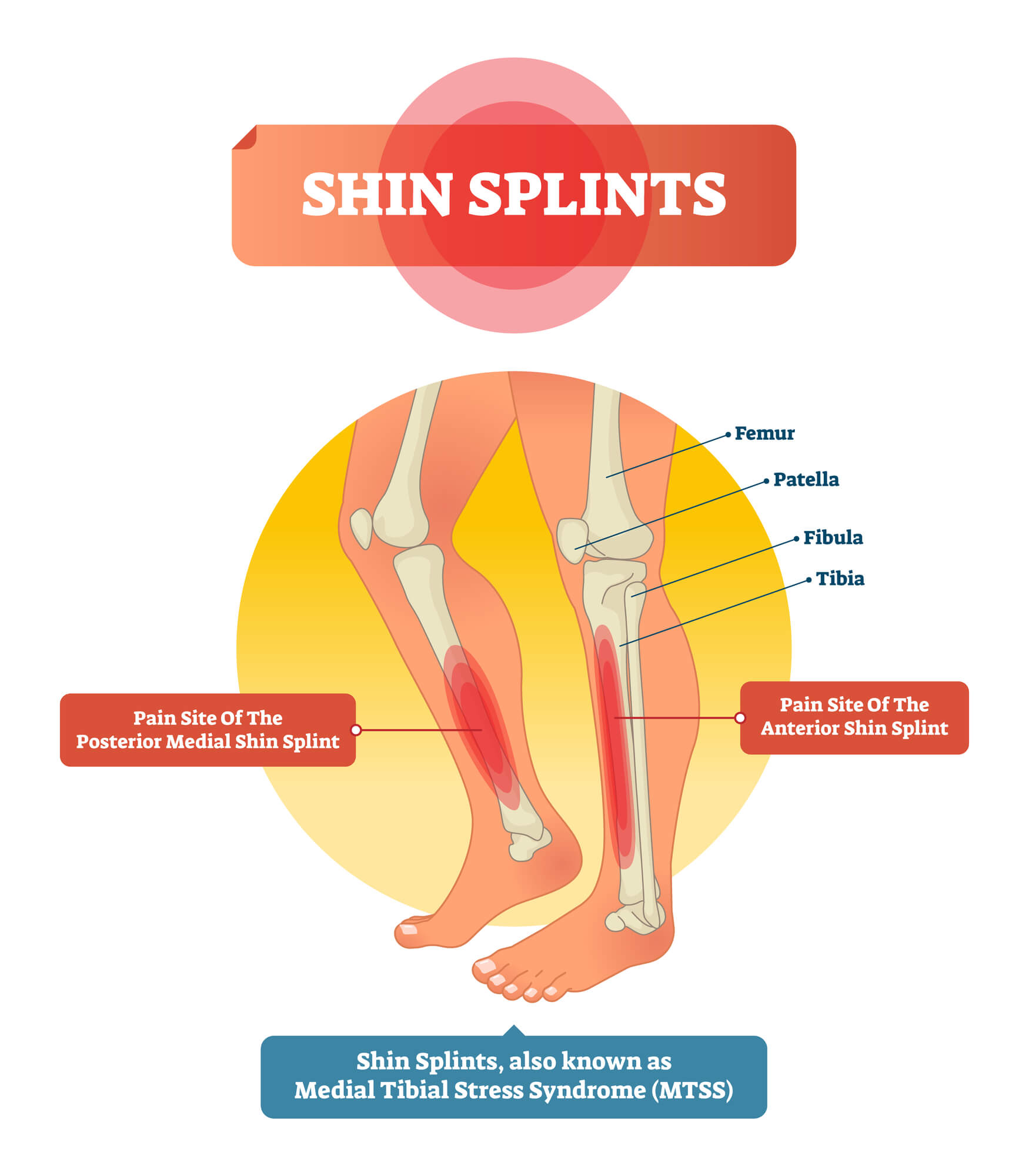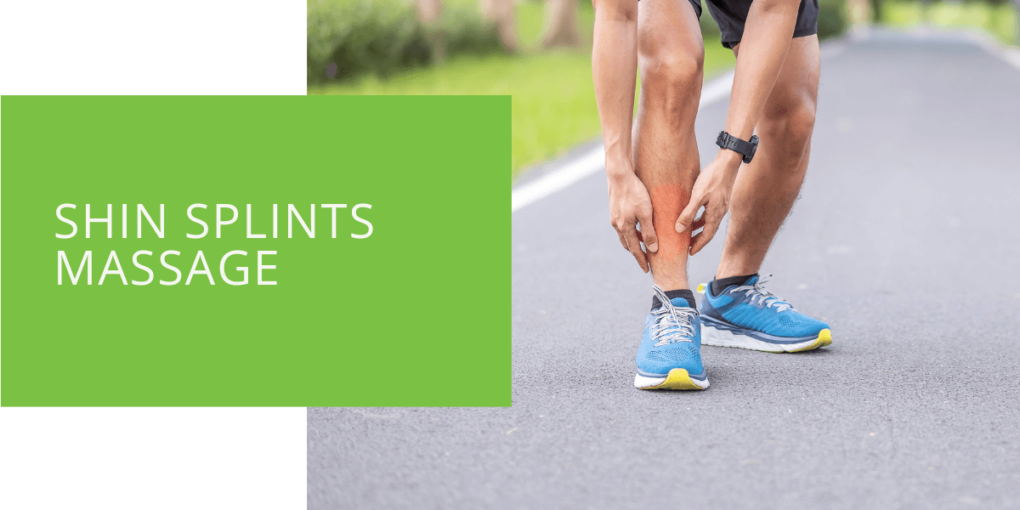Shin Splints Massage
Shin splints can be frustrating and painful, but incorporating massage therapy into your treatment plan can provide much-needed relief. Massage helps improve blood flow, reduce muscle tension, and promote healing in the lower leg. This article will delve into the benefits of shin splint massage, discuss various techniques, and provide tips for self-massage. So, let's explore how you can alleviate shin splint pain and get back on track with your activities.
Understanding Shin Splints
Definition and Symptoms
Shin splints, also known as medial tibial stress syndrome, refer to the pain along the shinbone (tibia) caused by overuse and repetitive stress. Common symptoms include throbbing pain, tenderness, and inflammation in the lower leg. If left untreated, shin splints can progress and even lead to stress fractures.
Causes and Risk Factors
Shin splints often occur due to overtraining, a sudden increase in intensity, improper footwear, and biomechanical issues. Runners, dancers, and athletes engaging in high-impact activities are particularly susceptible. Other risk factors include flat feet, tight calf muscles, and inadequate warm-up or cool-down routines.
The Role of Massage in Shin Splint Management
How Massage Works
Massage therapy is a valuable tool in managing shin splints by addressing the underlying causes and reducing pain and inflammation. Massage helps increase blood flow to the affected area through various techniques, relaxes the muscles, and promotes healing.
Benefits of Massage for Shin Splints
Massage offers several benefits for individuals dealing with shin splint pain. Firstly, it aids in the relaxation of tight muscles, especially the calf muscle and the tibialis anterior, reducing tension that contributes to shin pain. Secondly, it helps improve circulation, accelerating the delivery of essential nutrients and oxygen to the injured tissues and supporting the healing process. Lastly, massage can help break up adhesions and scar tissue, further alleviating discomfort.

Preparing for a Shin Splints Massage
Consultation with a Podiatrist
Before starting any massage therapy, it is crucial to consult with a podiatrist or a healthcare professional specializing in foot and leg conditions. They can comprehensively assess your condition, identify any underlying issues, and recommend appropriate treatment strategies, including massage therapy.
Communication with the Massage Therapist
When seeking a massage therapist, it is essential to communicate openly about your shin splint symptoms, pain levels, and preferences. Sharing this information helps the therapist tailor the massage techniques to your needs and ensures a safe and effective session.
Techniques for Shin Splints Massage
Effleurage
Effleurage is a foundational massage technique that involves long, gliding strokes along the lower leg. This technique helps warm up the muscles, increase blood flow, and prepare the area for deeper work. The massage therapist will use smooth, rhythmic strokes with their hands to perform effleurage, promoting relaxation and reducing muscle tension.
Deep Tissue Massage
Deep tissue massage focuses on reaching the deeper layers of muscle tissue to release chronic muscle tension and adhesions. When targeting shin splints, the therapist may apply firm pressure using their fingers, knuckles, or elbows. This technique helps relieve tightness in the calf muscles, breaks up scar tissue, and reduces pain in the lower leg.
Myofascial Release
Myofascial release is a technique that targets the fascia, a connective tissue sheath surrounding the muscles. By applying sustained pressure and stretching, the massage therapist can release tension and restrictions in the fascia, promoting pain relief and improved range of motion. Myofascial release can be particularly beneficial for shin splints as it addresses the tightness and restrictions that can develop in the connective tissues surrounding the shin.
Trigger Point Therapy
Trigger points are specific knots or areas of tightness within the muscles. Trigger point therapy involves applying direct pressure to these points to release tension and alleviate pain. A skilled massage therapist can locate trigger points in the calf and shin muscles and use techniques such as sustained pressure, deep strokes, and stretching to deactivate them. This targeted approach can provide significant relief for shin splint sufferers.
Foam Rolling and Self-Massage
In addition to professional massage therapy, you can incorporate self-massage techniques using a foam roller or other tools. Foam rolling is particularly effective in releasing tension and tightness in the calf muscles, which can contribute to shin splint pain. Rolling the foam roller along the calf muscles allows you to apply controlled pressure and help break up adhesions or trigger points.
You can use your hands or fingers to apply gentle strokes and kneading movements to self-massage the shin area. Focus on the areas where you feel the most pain or tension, and adjust the pressure to your comfort level. Remember to communicate discomfort or unusual sensations with your massage therapist or healthcare provider.

Post-Massage Care and Additional Recommendations
Rest and Recovery
After a shin splints massage session, allowing your body time to rest and recover is important. Avoid activities that aggravate your shin splints, such as high-impact exercises or excessive running. Take the opportunity to engage in low-impact activities like swimming or cycling, which can provide cardiovascular benefits without placing excessive stress on the shins.
Stretching and Strengthening Exercises
Stretching and strengthening exercises are integral to managing shin splints and complement the benefits of massage therapy. Stretching the calf muscles, tibialis anterior, and other muscles surrounding the shin can help improve flexibility and reduce muscle imbalances. Strengthening exercises, such as toe raises or resistance band exercises, can also help stabilize the lower leg and promote proper biomechanics.
Footwear and Orthotics
Proper footwear plays a crucial role in preventing and managing shin splints. Invest in supportive shoes that provide adequate cushioning, shock absorption, and stability. Consider consulting with a podiatrist or sports specialist to assess your foot mechanics and determine if custom orthotic devices would be beneficial. Orthotics can help correct any underlying biomechanical issues and provide additional support and cushioning to the feet and lower legs.
Follow-up with a Podiatrist
While massage therapy can be an effective tool in managing shin splints, it is important to have regular follow-up appointments with a podiatrist or healthcare professional. They can monitor your progress, adjust your treatment plan as needed, and provide further guidance on preventing future occurrences of shin splints.
Conclusion
Massage therapy offers numerous benefits for individuals dealing with shin splint pain. Through techniques like effleurage, deep tissue massage, myofascial release, and trigger point therapy, massage can help relieve muscle tension, improve blood flow, and promote healing in the lower leg. When combined with proper rest, stretching exercises, and supportive footwear, massage therapy can be valuable to your overall shin splint management strategy. Consult a podiatrist or qualified massage therapist to discuss your needs and find the right approach. Don't let shin splints hold you back from enjoying your favorite activities - take action and find relief through the power of massage therapy.

